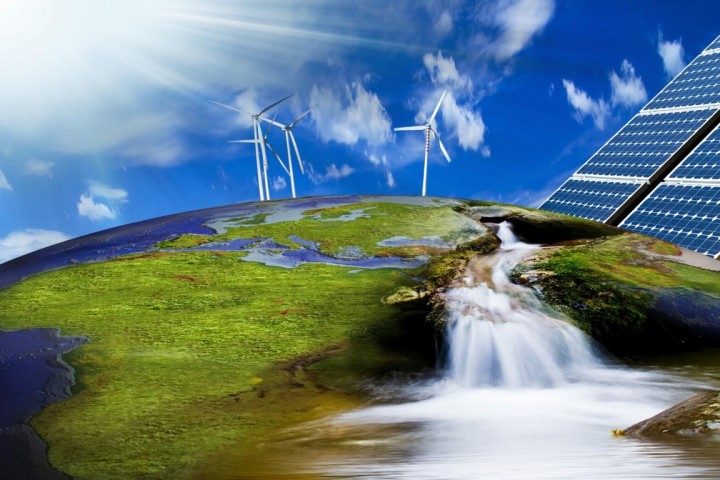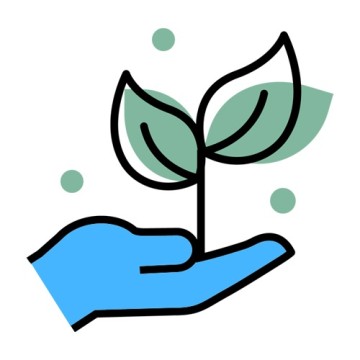Speeding up the global energy transition

Alan Finkel is corporate adviser on climate-change technologies and author of ‘Powering Up: Unleashing the Clean Energy Supply Chain’.
Noé van Hulst is vice-chair of IPHE and hydrogen advisor to the International Energy Agency (IEA). He is the author of ‘From Dutch Disease to Energy Transition’.
The latest message from the IEA on the global energy transition is crystal clear. Although clean energy is growing rapidly, the pace is not fast enough to be on track for Net Zero Emissions in 2050. There is less crystal clarity on how to speed things up, but we suggest focussing on three key points.
The first is what we call ‘firing on all cylinders’.
The global energy transition is the biggest transformation since the Industrial Revolution. Many people think that all we need to do is deploy solar and wind power, but it is not so simple. To think that we might run our civilisation on just two sources of energy is like going into battle without the full range of essential weapons.
For example, Australia is committed to solar and wind power, but hydroelectric power is impractical and nuclear power is vetoed. Too many other countries have similar vetoes or taboos.
We simply cannot afford to exclude any measures that can substantially help decarbonisation. It’s time for a global revival of nuclear energy and sustainable use of bioenergy in the global energy mix.
And, of course, all countries can and should act much more strongly on the demand side to phase out inefficient appliances, vehicles and buildings and push energy efficiency (the ‘first fuel’ as the IEA says) to its limits.
By firing on all cylinders, we can also keep the cost of mitigating climate change as low as possible. If we don’t achieve a sensible balance, the costs will be too high and the citizenry will be angry, like we saw in France with the ’yellow vests’ protests.
At the same time, we should boost research and development and innovation in all areas including nuclear fusion, carbon removal and geoengineering to build a vast new clean energy industry and new green jobs.
The second key point is to aggressively fight the bottlenecks and showstoppers.
Australia is a case study. In May last year, the progressive Labour Party won government for the first time in nine years. Consistent with their strong commitment to decarbonising the economy, the new government rapidly legislated a 43% reduction target for 2030 . They also set a target of 82% renewables for 2030.
But it turns out that political will is insufficient. Instead of growing faster than ever as will be required to achieve 82% renewables by the end of the decade, the annual increase in solar and wind generation was marginally smaller last year than in 2021 and substantially smaller so far this year. The showstoppers are prices and approvals.
On price, Australia may be suffering from Dutch Disease. Export revenues from fossil fuels in Australia are strong, but labour productivity is lagging. It is not surprising that proposed new transmission lines are two or three times more expensive than equivalents in the United States.
On approvals, the anti-transmission-line activists and the anti-wind-farm activists have the upper hand. The struggle between local environmental considerations and the fight against global climate change is called the Greens’ Dilemma:
“How can environmental law be reformed to facilitate building climate infrastructure faster without unduly sacrificing its core progressive goals of environmental conservation, distributional equity, and public participation?”
The price issues and the tension between local and global environmental concerns are delaying the transition and illustrate our point that delivering the clean energy transition is not simply a matter of political will. The solution will require dramatically lowering the implementation gap between targets and final investment decisions on the ground.
The fundamental problem is that the policy making machinery in OECD countries in particular is entirely out of step with the urgency of climate challenge. There is too much of a ‘business as usual’ approach, particularly visible in endless licensing procedures.
We can’t afford this any longer, when the global climate is clearly already heating up faster than previously expected.
What we need is for governments to form a crisis cabinet, like in some states and countries during Covid. The climate and energy crises have become too important to delegate to environment and energy ministers who are sometimes driven by opposing agendas.
We need presidents, prime ministers, chancellors and governors to coordinate the effort.
The third key point is to bring the fossil fuel producing countries along. They are lagging more than others and sometimes resist ambitious global steps. This is understandable, since their economies are so dependent on fossil fuel exports. They face an existential threat, as both our recent books point out.
What could an energy powerhouse like Australia do? It can speed up its transformation into an ‘Electrostate.’ An energy electrostate can export sunshine as low-emission hydrogen, ammonia or carbon-based liquid fuels.
An energy transition materials electrostate can produce battery materials such as lithium, nickel and cobalt, and the rare-earth elements used in vehicle electric motors and wind turbine generators. A commodities electrostate can export decarbonised versions of basic commodities, such as green metallic iron or green nitrogenous fertiliser.
All of these opportunities depend on a plentiful, zero emissions, low-cost electricity supply. This implies a rapid scale-up of solar and wind farms and where possible hydroelectric power, nuclear power and sustainable bioenergy ahead of closing down coal-fired power plants.
It will require stronger investment in transmission lines and storage, and for many of the decarbonised products a major investment in gigawatt-scale electrolysis plants. Australia has started on this journey but needs to speed up and expand its transformation.
As one of the prominent emerging countries, Saudi Arabia is making considerable progress in economic diversification and low-carbon exports. The UAE, not by coincidence host of COP28, has also embarked on this pathway.
However, the bulk of producer economies in the developing world are still lagging and will need a lot of help to speed up their transition. We see the instrument of Just Energy Transition Partnerships, as first developed with South-Africa and Vietnam, as a promising start.
But these JETPS should be scaled up and expanded significantly at COP28 and beyond.
Layla Sawyer, Secretary General at the currENT Europe (Center for Ultra-Wide-Area Resilient Electric Energy Transmission Networks) spoke about how the global energy transition depends on 1) speeding up technologies for grid optimization and safe transport of electricity; ..
Speeding up the energy transition reduces climate risks: The World Climate Conference in Glasgow has just ended, and the question is whether the goal of maximum global heating of 1.5°C can still be achieved. In a model calculation,…
we wish you and your winning team at Irena a lot of success not at last to the benefit of our next generations. Don’t hesitate to speeding up the global energy transition

